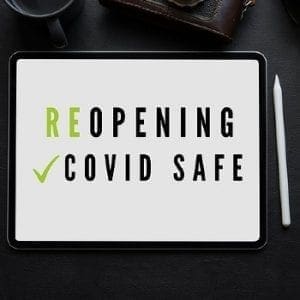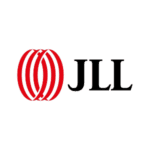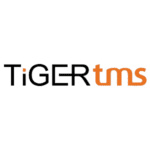 Unless a property is seasonal, most hotel aren’t built to be closed. Ask around and you’ll find that many hospitality professionals have never gone through the process of closing or opening a hotel.
Unless a property is seasonal, most hotel aren’t built to be closed. Ask around and you’ll find that many hospitality professionals have never gone through the process of closing or opening a hotel.
The first half of 2020 has changed that and we find ourselves at the start of the second half of the year with closed hotels still trying to decide if they should reopen and recently opened hotels either struggling to operate on very minimal staffing or being overwhelmingly busy (with very minimal staffing).
In any of these scenarios, trying to figure out what to do to safely reopen or to reassess plans that were put in place months ago should be front of mind. The recent spike in COVID-19 cases has brought more uncertainty to the forefront, and the lack of resources available is making it that much harder to decide if reopening is the right move, let alone to draft and implement plans that are both functional and compliant with local regulations.
The decision to reopen shouldn’t be taken lightly, but with so many stakeholders affected, the pressure to do so can be intense. In the mix is the constantly changing landscape; strategies have to be nimble and able to be turned on a dime and new directives are coming out daily. A company that has hotels in multiple locations must contend with the countless policies and regulations from separate jurisdictions that often compete against one another. Many smaller owners and operators are simply struggling to find relevant information so they can put a return to operations plan in place that protects their guests and employees.
Paralysis by analysis is real, and now is not the time to fall victim to it. As operators, we need to find ways to remove bottlenecks and keep moving forward. Below outlines some of the actions that you can take today to make the reopening process more manageable.
Making it manageable
Distilling a return to operations plan into its component parts is the secret sauce to making it manageable. Ultimately, the process for developing a comprehensive plan covers four main themes:
Core job functions
Understanding the people resources you need and who will be responsible for what allows you to find and plan for gaps. You’ll want to cover off on items such as:
- Determining which roles and services will be suspended based on their risk of exposure
- Determining which roles need to be at the hotel & which can work from home during pre-opening phase
- Making a list of core work functions by date of return
- Outlining the new tasks that need to be covered by each job function and how that affects furloughs or layoffs
Property planning
With a clear understanding of who will perform which task and where skills gaps exist, the planning phase can begin. In this section you should start to outline how your hotel will sell and occupy rooms / F&B spaces, and how guests and employees will interact. Items of particular attention include but are not limited to:
- Outlining a room consolidation plan for prolonged low occupancy period
- Determining COVID-19 employee training: Who, What When & Where
- Determining building entry and PPE requirements for employees and guests
- Determining plans / protocols for suspected cases: employees and guests
- Determining Cleaning SOPs for FOH, BOH and Guest Rooms with particular attention to be paid to high touch areas
- Determining employee responsibilities related to self-administered practices to maintain health and safety
- Creating systems to verify and track that the health and safety plan is being followed
Documentation
Getting plans on paper for training and reference can’t be overlooked. The goal is to be able to provide effective training, ensure knowledge retention and create a system that is easy to reference when needed. It’s especially important to find a balance between too much and not enough documented information as both have negative consequences for your business.
- Document property specific SOPs established from the planning phase
- Determine a COVID-19 Safety Plan. Note: Some jurisdictions require that you post your COVID-19 Safety Plan on your website – verify with your local authorities to see if you’re required
- Complete a Preparedness and Response Plan including Readiness Assessment and Business Continuity Plan
- Establish vendor visitation policy and post it at vendor arrival points
Communication
Communication takes several forms and must be tailored to the audience. In your hotel, you could be sharing information with owners, the brand, guests, vendors, employees or the general public. Each will want to know specific details about items that impact them. Those items are likely to include:
- When you’re re-opening, including F&B and other property amenities. When date(s) are set, include: Owner / Lender, Employees, Guests, Clients, Lessees, Vendors, PMS / Room Inventory / Distribution Channels, Website in all update
- Establishing your employee return to work policy for bringing the business back online
- Ensuring Reservations and Telephone Operators have all necessary information to communicate cleaning practices and protocols to guests
- Sharing your COVID-19 Safety, Preparedness and Response Plans to multiple groups including local authorities if required
- Sending your new Vendor Delivery and Visitation Policy to all vendors
- Sharing traffic flow guidelines with guests before they arrive and during the check in process
Taking a methodical “bucket-style” approach to planning and execution makes the entire process much easier. It reduces the sense of being overwhelmed and emphasizes completing items before moving on to the next, allowing you to feel organized and accomplished.
There is much more to consider and plan for than is mentioned above. Not every hotel is the same and not every scenario will be the same. These recommendations are intended to be a guide and should be adapted to your specific needs.
If you don’t have the resources available to pull together a reopening plan, there are options available to you. Knowing Hospitality has developed a comprehensive, three-step Return to Operations checklist that walks through the plans and considerations that need to be made for hotels looking to reopen or those needing to reassess initial assumptions. You can access each through the links below:
Return to Operations (RTO) Checklist – Step 1
Return to Operations (RTO) Checklist – Step 2
Return to Operations (RTO) Checklist – Step 3
If you’d like to discuss or review your existing processes or need a more detailed, specific plan for your business, inclusive of customized pre-opening measures and executional guidelines, please leave a comment or reach out to me directly and I’ll get in touch with you.
Questions? Have I missed any points? Need to brainstorm a topic? Share below in the comments — I’d love to hear them and help!


















